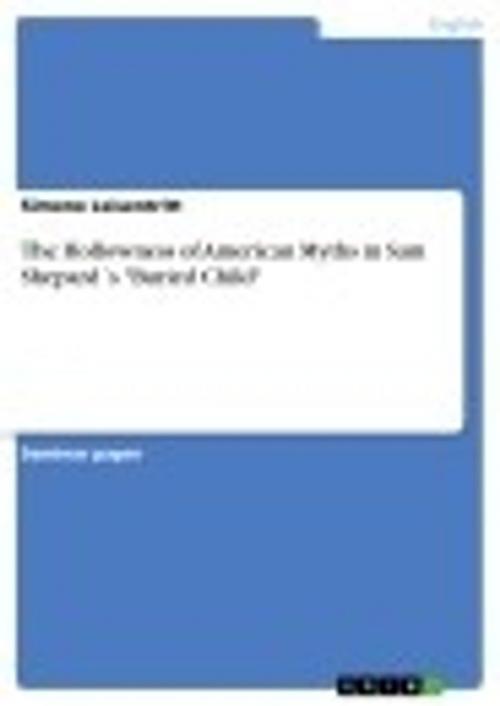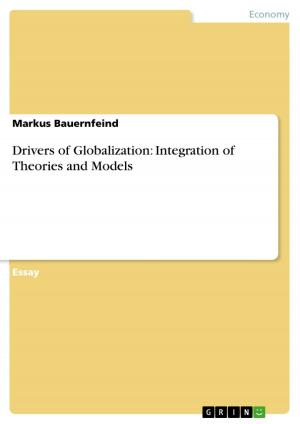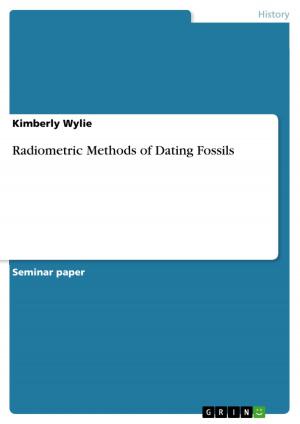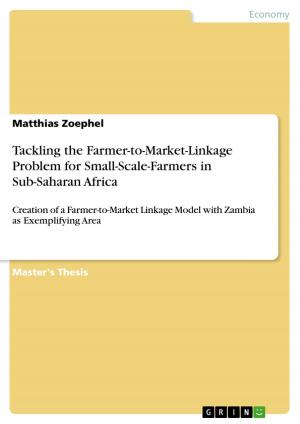The Hollowness of American Myths in Sam Shepard´s 'Buried Child'
Nonfiction, Entertainment, Drama, Anthologies| Author: | Simone Leisentritt | ISBN: | 9783640831555 |
| Publisher: | GRIN Publishing | Publication: | February 15, 2011 |
| Imprint: | GRIN Publishing | Language: | English |
| Author: | Simone Leisentritt |
| ISBN: | 9783640831555 |
| Publisher: | GRIN Publishing |
| Publication: | February 15, 2011 |
| Imprint: | GRIN Publishing |
| Language: | English |
Seminar paper from the year 2010 in the subject American Studies - Literature, grade: 1,7, University of Tubingen (Englisches Seminar), course: PS II Literary Studies: Family Scenes: The American Family on Stage, language: English, abstract: 'This study holds that the coherence of the [American] nation owes much to the potency of its communal 'stories', those myths given prominence in cultural consciousness.' (Wade 3). According to Wade, the American culture is based on certain myths, on complex systems of attitudes, beliefs, and values that are characteristic for a specific society or group (cf. Collins Dictionary 1077). The history of the nation and the experience of westward expansion resulted in certain myths that are still present in the American imagination (cf. Companion Drama 286). U.S. playwright Sam Shepard is known for his interest in national myths, which he defines as mysteries that speak to the emotions and feelings of people, and in the prominence of such myths in modern society (cf. Graham 112). Thus, Shepard sees his plays as tools for cultural conversation by which he questions American myths (cf. Companion Drama 291). One of Shepard´s most popular plays is the family drama Buried Child, which unfolds the dark secret of a family living in a farm house in Midwestern Illinois (cf. BC ). This term paper will focus on two myths which are dominant in Buried Child: The myth of the generic middle-class family in the U.S. and the myth of the American Midwest. How does Sam Shepard reveal these myths in his family drama, and how does he demonstrate their hollowness? The first chapter will be based on the myth of the generic American family, on its definition, its appearance in the play, and on the question how this myth is criticized. The second chapter will focus on the myth of the American Midwest in the same line.
Seminar paper from the year 2010 in the subject American Studies - Literature, grade: 1,7, University of Tubingen (Englisches Seminar), course: PS II Literary Studies: Family Scenes: The American Family on Stage, language: English, abstract: 'This study holds that the coherence of the [American] nation owes much to the potency of its communal 'stories', those myths given prominence in cultural consciousness.' (Wade 3). According to Wade, the American culture is based on certain myths, on complex systems of attitudes, beliefs, and values that are characteristic for a specific society or group (cf. Collins Dictionary 1077). The history of the nation and the experience of westward expansion resulted in certain myths that are still present in the American imagination (cf. Companion Drama 286). U.S. playwright Sam Shepard is known for his interest in national myths, which he defines as mysteries that speak to the emotions and feelings of people, and in the prominence of such myths in modern society (cf. Graham 112). Thus, Shepard sees his plays as tools for cultural conversation by which he questions American myths (cf. Companion Drama 291). One of Shepard´s most popular plays is the family drama Buried Child, which unfolds the dark secret of a family living in a farm house in Midwestern Illinois (cf. BC ). This term paper will focus on two myths which are dominant in Buried Child: The myth of the generic middle-class family in the U.S. and the myth of the American Midwest. How does Sam Shepard reveal these myths in his family drama, and how does he demonstrate their hollowness? The first chapter will be based on the myth of the generic American family, on its definition, its appearance in the play, and on the question how this myth is criticized. The second chapter will focus on the myth of the American Midwest in the same line.















